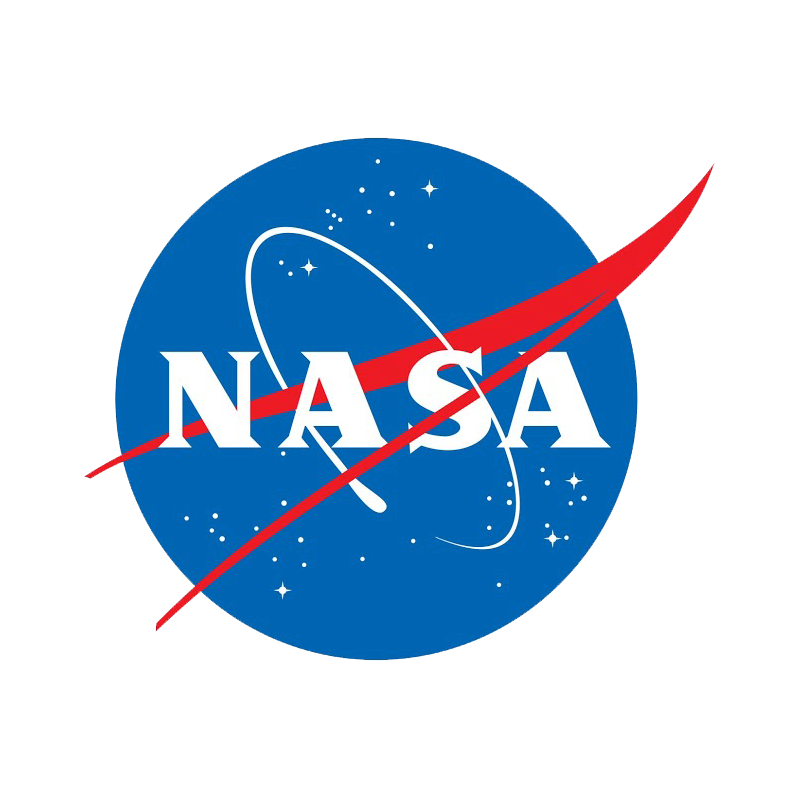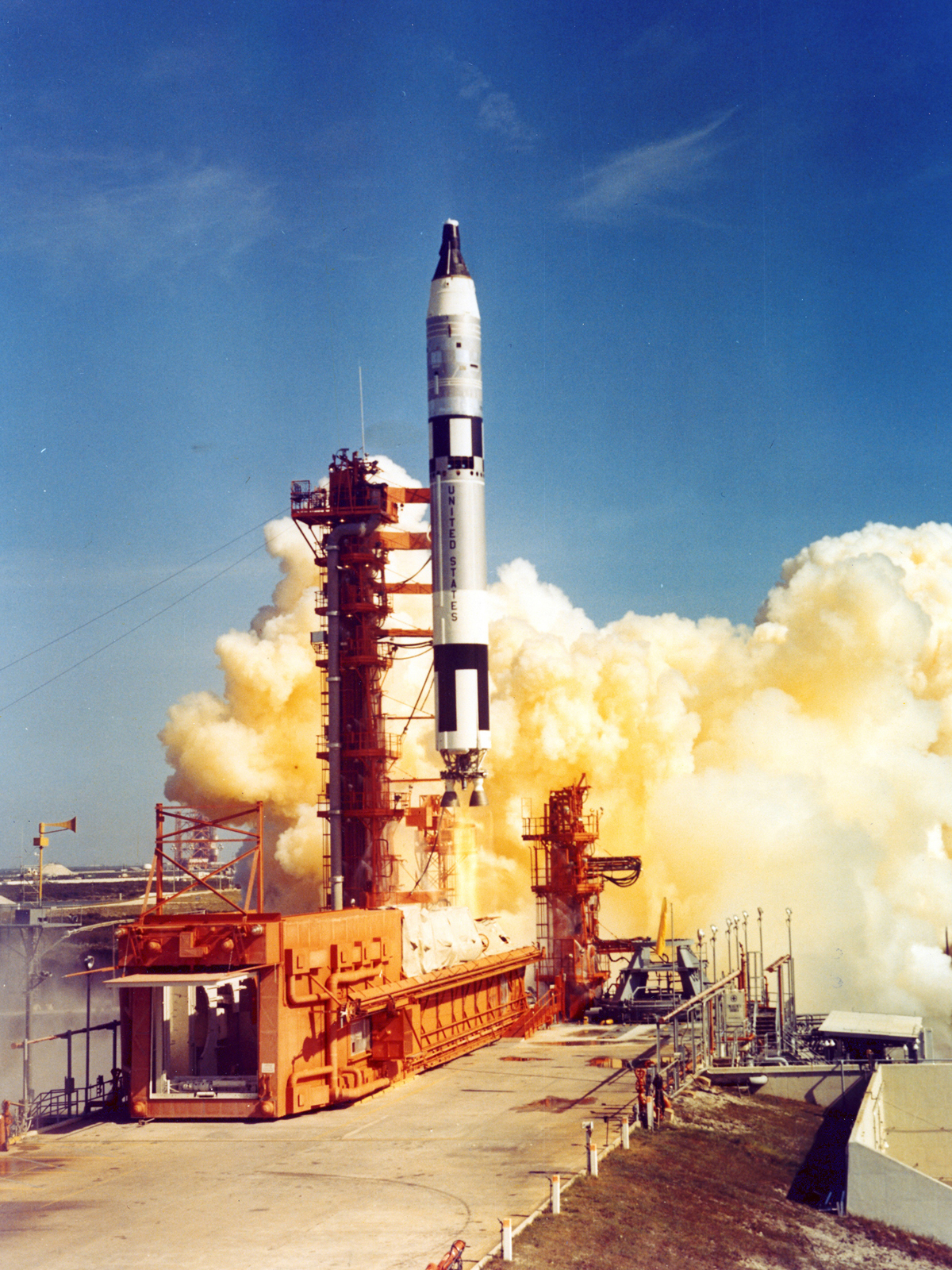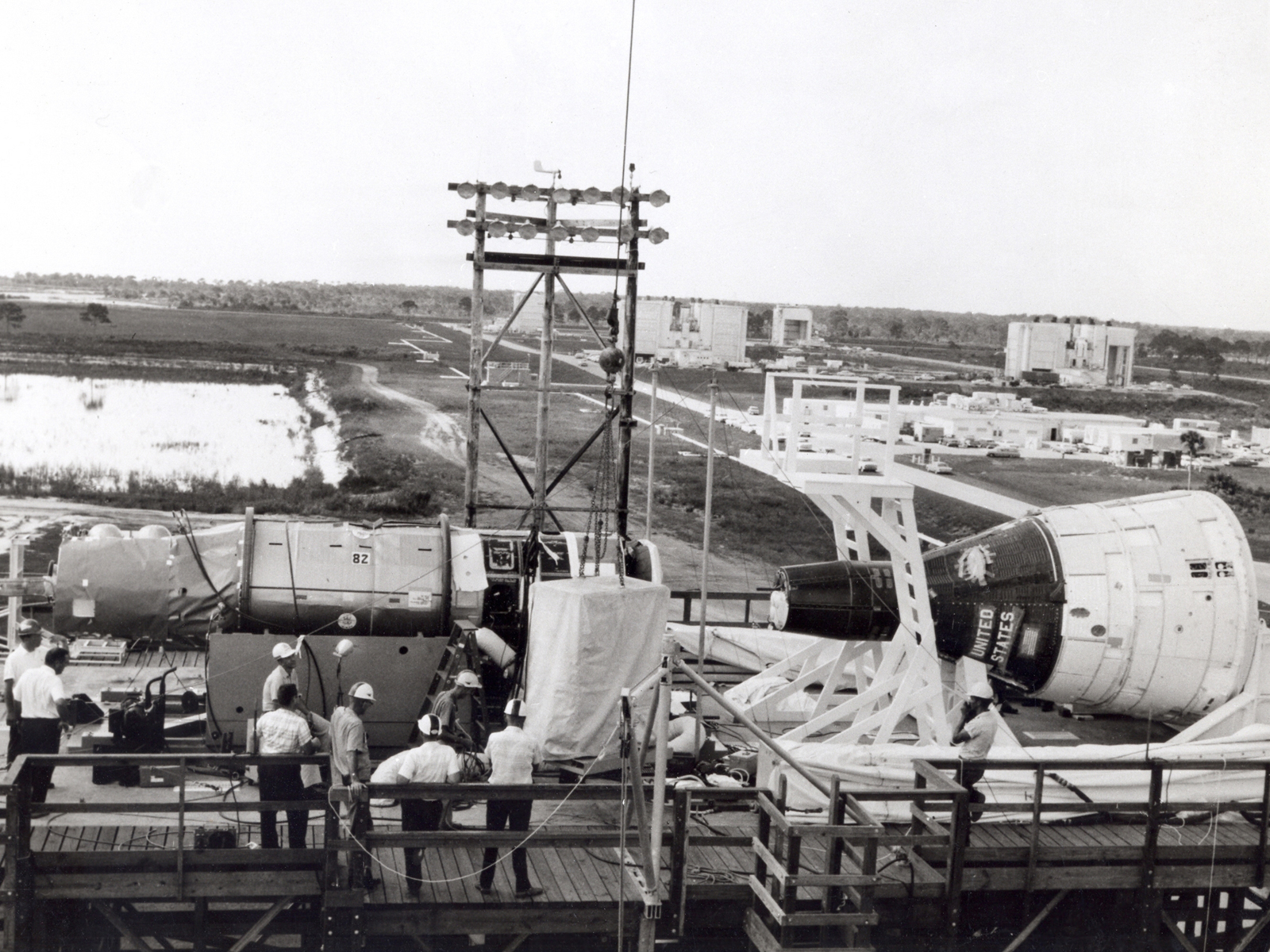On May 5, 1961, Alan Shepard’s Mercury flight was inked in history books. Twenty days later, President John F. Kennedy committed the United States to landing a man on the moon before the close of the decade. Project Gemini was the training ground for the moon missions of Apollo.
Although the Gemini program was based at NASA’s Manned Spacecraft Center in Houston, now the Johnson Space Center, each of the Gemini-Titan vehicles launched from Launch Complex 19 at the Launch Operations Center in Cape Canaveral, Fla.
Astronauts Gus Grissom and John Young lifted off March 23, 1965 on Gemini 3, the first human flight of the project. The nearly five-hour mission demonstrated the new capsule’s maneuverability in orbit. On Gemini 4, astronaut Edward White became the first American to venture out of the safe confines of a capsule and into the vacuum of space.
The following missions continued the streak of firsts. Gemini 5 marked the first time fuel cells were used to provide electrical power to a spacecraft, allowing an eight-day mission. Gemini 6 crew members Wally Schirra and Tom Stafford met up with Gemini 7 astronauts Frank Borman and Jim Lovell and the two crews carried out the first space rendezvous. The Gemini 7 mission lasted a record two weeks.
The first docking with another spacecraft—an Agena rocket stage—took place during Gemini 8. When a stuck capsule thruster caused the docked vehicles to begin spinning wildly, astronaut Neil Armstrong undocked and regained control of the capsule.
Gemini 9 rendezvoused with an unmanned Augmented Target Docking Adapter, but docking was impossible due to the failed jettison of the adapter’s docking shroud. The three-day mission featured a challenging two-hour spacewalk by astronaut Gene Cernan. NASA continued to accumulate extensive experience in rendezvous, docking, spacewalk and orbital maneuvering during the next two flights, Gemini 10 and Gemini 11.
Gemini 12 brought the program to a close. During the nearly four-day mission, astronaut Buzz Aldrin set a spacewalk record, spending more than five hours outside the capsule while it was docked to an Agena booster.
The Gemini missions gave the agency crucial experience in real-time troubleshooting and advanced space operations – knowledge that paved the way to the moon.
2 min read





























